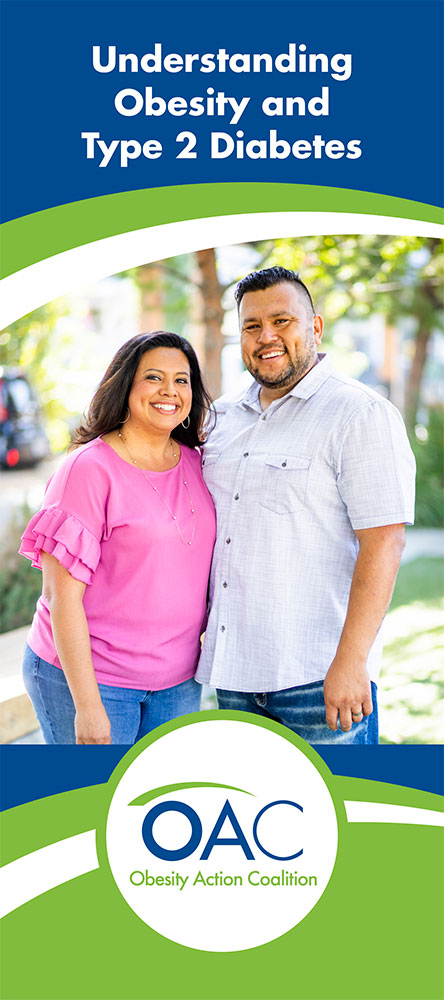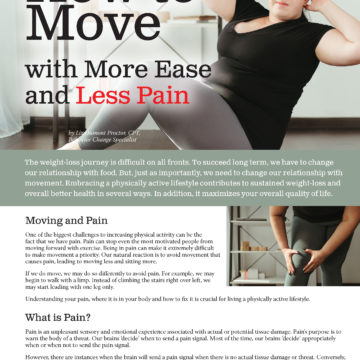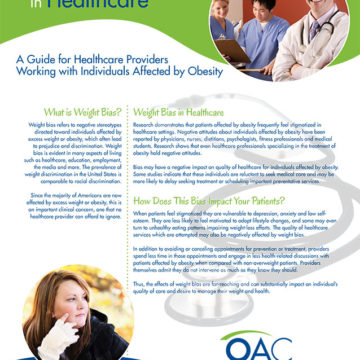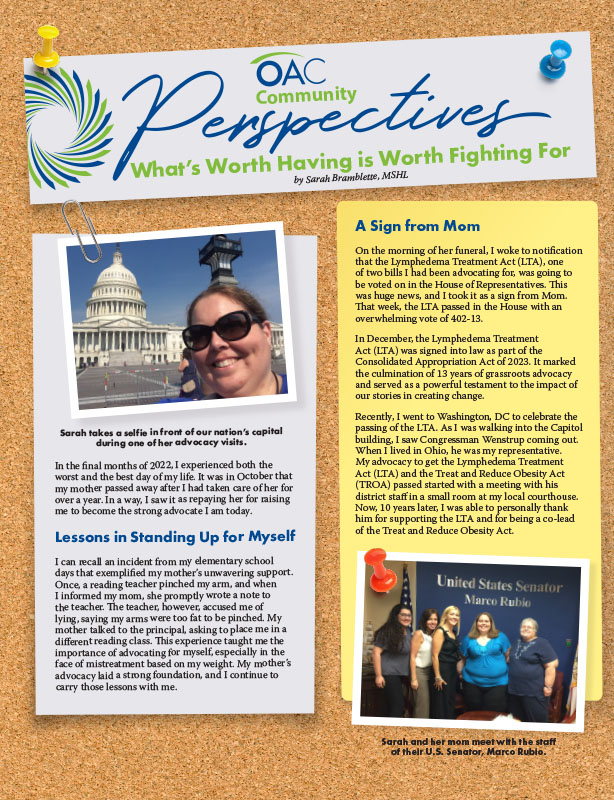Understanding Obesity and Type 2 Diabetes


This educational brochure is made to help you gain knowledge about type 2 diabetes and obesity. Excess weight, obesity and severe obesity are all risk factors for developing type 2 diabetes. Often times, people are not aware of the health risk of excess weight until they are diagnosed with pre-diabetes or type 2 diabetes.
In this brochure, we will cover various topics, such as:
- Type 2 diabetes
- Defining excess weight and how it impacts the body
- Managing diabetes and excess weight through diet, exercise and medications
- The impact of excess weight on type 2 diabetes
What is Excess Weight?
Excess weight and obesity can affect a person’s health in many ways. Many methods of measurement can be used to evaluate how much excess weight a person has. One of the most commonly used methods is determining body mass index (BMI), which is calculated by dividing weight in kilograms by height in meters squared. Thought BMI has its limitations (it is not a direct measure of body fat, and BMI risk is also influenced by race, ethnicity and age), in general, having an elevated BMI increases your risk for overweight and obesity.
When looking at a BMI chart and assessing weight status, there are four categories: underweight, normal weight, overweight and obesity. If your BMI is within the overweight or obesity category, you should talk to a healthcare provider about your risk for obesity and weight-related conditions.
Obesity increases a person’s risk of developing:
- Hypertension (high blood sugar)
- Type 2 diabetes
- Certain types of cancer
- Osteoarthritis (the breaking down of cartilage and bone)
- Stroke
- Dyslipidemia (this consists of high blood cholesterol and triglycerides, a type of fat)
What is Type 2 Diabetes?
Type 2 diabetes is a long-term, potentially crippling, and often fatal medical condition. This disease requires regular monitoring of an individual’s blood sugar level and treatment. In type 2 diabetes, the body either does not properly produce or use insulin. Insulin is a hormone produced by the pancreas that helps move sugar into cells. The body becomes resistant to insulin if it is not properly producing or using it. This resistance causes high blood sugar levels.
Difficulties of high blood sugar and insulin resistance include:
- Increased risk of heart disease and stroke
- Neuropathy (nerve damage, especially in extremities)
- Nephropathy (renal impairment, kidney failure)
- Retinopathy (vision problems, blindness)
- Cardiovascular disease (heart disease and increased risk of stroke)
- Erectile dysfunction in men and decreased sexual desire in both men and women
- Depression
- Amputation
How does Excess Weight Impact Type 2 Diabetes?
Excess weight can greatly affect your health in many ways, with type 2 diabetes being one of the most serious. People who are categorized as “overweight,” according to body-mass-index (BMI), are three times more likely to have type 2 diabetes compared to people who are “normal weight.”
When a person predisposed to diabetes has excess weight, the cells in the body become less sensitive to the insulin that is released from the pancreas. This can end up causing insulin resistance. Insulin resistance is when the insulin ratio is higher than the blood sugar level. This means the body’s insulin is not effectively reducing its sugar levels. People affected by type 2 diabetes, who exercise, appear to reduce the severity of insulin-resistance. Exercised muscles are able to use the extra sugar found in the blood. Therefore, the body does not produce insulin and the sugar is no longer redirected to excess fat cells.
People affected by excess weight, especially obesity and severe obesity, are more likely to develop type 2 diabetes as a related condition of their excess weight.
Obesity and severe obesity greatly increase your risk of having:
- Heart disease
- Type 2 diabetes
- Certain types of cancer
- Sleep apnea (repeated stopping and starting of breathing)
- Osteoarthritis
How Does the Body Manage Excess Glucose?
After we eat a meal, the processes of chewing and chemical digestion produce glucose (sugar). This is the most readily available form of fuel for our organs- especially muscle and brain tissue. In a normal state, the glucose produced from these digestive processes enters our cells to help with other metabolic processes. The metabolic process is the making and breaking down of food. Insulin acts as a key that unlocks the door to let glucose in to feed our cells. When insulin is present, it also turns off the process of using glycogen from the liver. This ensures that the glucose levels do not rise further after a meal. Insulin reduces blood glucose by collecting any excess glucose that is present in the bloodstream so that it can be stored as glycogen for future use.
However, if not enough insulin is available, then this glucose is unable to enter cells. Instead, the glucose remains in the bloodstream in a higher than usual amount. This condition is referred to as elevated blood glucose or hyperglycemia.
Are You at Risk for Type 2 Diabetes?
What you eat/drink throughout your day and how active you are affects your risk of developing type 2 diabetes. Being “overweight” (BMI of 25-29.9), or affected by obesity (BMI of 30-39.9) or severe obesity (BMI of 40 or greater), greatly increases your risk of developing type 2 diabetes. The more excess weight you have, the more resistant your muscle and tissue cells become to your own insulin hormone.
In addition to excess weight, there are many other facts that increase your risk of developing type 2 diabetes, such as:
Inactive Lifestyles:
Inactivity and having excess weight go hand-in-hand with a diagnosis of type 2 diabetes. A person can decrease insulin resistance by exercising and can lower blood sugar levels.
Unhealthy Eating Habits:
Too much fat in your diet, not enough fiber, and too many simple carbohydrates all contribute to the development of type 2 diabetes.
Family history and genetics:
People who have family members with type 2 diabetes are at a greater risk of developing it themselves. People who have a higher rate of diabetes include:
- Asians
- Pacific Islanders
- American Indians
- Alaskans
- African Americans
- Hispanics
Increased Age:
As we age, the risk of type 2 diabetes becomes greater. The pancreas ages right along with us and doesn’t pump insulin as accurately as it did when we were younger. As our cells age, they become more resistant to insulin as well.
High Blood Pressure and High Cholesterol:
Not only do these two factors do damage to heart vessels, but they are two key components in metabolic syndrome. Having metabolic syndrome increases the risk of heart disease, stroke and type 2 diabetes.
History of Gestational Diabetes:
Women affected by obesity are more insulin resistant when compared to women of normal weight. When pregnant, gestational diabetes generally lasts the length of the pregnancy. Roughly 5% to 10% of females with gestational diabetes will continue to be affected by diabetes after delivery.
Symptoms that you may be developing or have type 2 diabetes:
- Frequent urination
- Increased thirst
- Unplanned weight-loss
- Weakness and fatigue
- Numbness or tingling in hands, legs or feet
- Blurred vision
- Dry, itchy skin
- Frequent infections
- Slow healing of cuts and bruises
*If you are experiencing these symptoms; seek medical advice from a healthcare provider.
How do you test for type 2 diabetes?
There are a variety of blood tests that may indicate whether you have type 2 diabetes. Let’s take a look at each test and see what different results could mean for you and your health.
Fasting Blood Sugar Test
The amount of sugar in your blood naturally fluctuates but stays within a normal range. The preferred way to test your blood sugar is after fasting overnight for at least eight hours. A fasting blood sugar level less than 100 milligrams of sugar per deciliter of blood is considered normal.
If your blood sugar level measures from 100 to 125, you have impaired fasting glucose, and this may be an indication that you have pre-diabetes. If your blood sugar level is above 200 mg/dL, with symptoms of diabetes, a second test may not be necessary to reach the diagnosis.
Random Blood Sugar Test
This test is done without any special preparation, such as fasting overnight. Even if you’ve recently eaten and your blood sugar level is at its peak, the level shouldn’t be above 200 mg/dL. If it is and you also have symptoms of type 2 diabetes, you can expect a diagnosis of type 2 diabetes.
Oral Sugar Tolerance Test
(2-hour Post-Glucose Challenge)
This test requires you to visit a lab or a healthcare professional after at least an eight-hour fast. At the office or lab, you will drink about eight ounces of a sweet liquid that contains a lot of sugar (about 75 grams). Your blood sugar level will be measured before you drink the liquid, then after one hour and again after two hours. If your blood sugar level is 200 mg/dL or above after two hours, you may have diabetes.
What Can I Do to Manage Type 2 Diabetes?
Healthcare professionals utilize a combination of medications and lifestyle modifications to treat type 2 diabetes. After being diagnosed with type 2 diabetes, expect to see a healthcare professional to create a treatment plan. It may be necessary to take on daily action steps, such as self-care behaviors, in order to manage diabetes. This also helps healthcare professionals know when the treatment plan needs to be updated.
Blood sugar testing is an important part of taking care of type 2 diabetes. The frequency of testing may vary from daily to before and after every meal, and may change after the addition of a medication. It is important to record your blood sugar reading in a reading log.
In addition to daily blood sugar testing, periodic testing of blood pressure, blood levels of lipids, as well as the measurement of hemoglobin A1C (HbA1C or A1C) levels may be needed. A measurement of hemoglobin is a test that estimates average blood sugar levels during a period of three months. In general, the preferred ranges for a person with diabetes are:
- A1C: less than 7.0%
- Blood pressure: less than 130/80 mmHg
- LDL “bad” cholesterol: less than
- 100 mg/Dl (less than 70 mg/dl of cardiovascular disease is present)
- HDL “good” cholesterol: greater than 40 mg/dl for men and greater than 50 mg/dl for women
- Triglycerides: less than 150 mg/dl
As with blood sugar goals, these ranges may vary based on your healthcare professional’s diagnosis. Your healthcare professional will create specific goals to meet your needs.
Healthy Eating and Exercise:
Adopting a healthy lifestyle that maintains a calorie-controlled diet and average intensity exercise are two ways people with type 2 diabetes and excess weight can shed pounds.
HEALTHY MEAL PLAN:
Weight-loss occurs when people burn more calories than they consume. A calorie deficit of 500 calories a day can result in weight-loss of roughly one pound per week. Writing down the food, portion size, and calorie amount in a food diary can help people become aware of what they consume and can provide evidence of calorie intake.
Someone with excess weight and diabetes may benefit from limiting carbohydrates in their diet.
Carbohydrates raise blood sugar more than other foods and will cause the body to make more insulin which can result in weight gain.
Foods that are high in carbohydrates include:
- Snacks like cake and cookies
- Rice
- Fresh fruit
- Ice cream
EXERCISE PROGRAM:
Regular exercise helps maintain weight-loss and prevent regain. It also improves glycemic control and reduces the risk of cardiovascular disease and blood glucose levels. Glycemic control is the measurement of the effects of carbohydrates on sugar level.
A goal of 30 minutes of average exercise most days per week should be set. Exercise does not need to occur in a single session to be beneficial. Dividing the activity into multiple, short episodes produces similar benefits and is often more achievable.
Achieving the recommended weight loss is a feat that brings great joy to people with diabetes. People noticed a decrease in their insulin requirement and a decrease in weight circumference. However, this is just the beginning. Maintaining the new, lower weight is a different battle. Several studies suggest that 60 to 75 minutes of moderate activity (walking) or 35 minutes of intense activity (jogging) daily is needed to maintain a desirable weight loss.
by Sarah Ro, MD; and Young Whang, MD, PhD Fall 2023 Mary, a postmenopausal woman with a…
Read Articleby Rachel Engelhart, RD; Kelly Donahue, PhD; and Renu Mansukhani, MD Summer 2023 Welcome to the first…
Read Articleby Sarah Bramblette, MSHL Summer 2023 In the final months of 2022, I experienced both the worst…
Read Article









